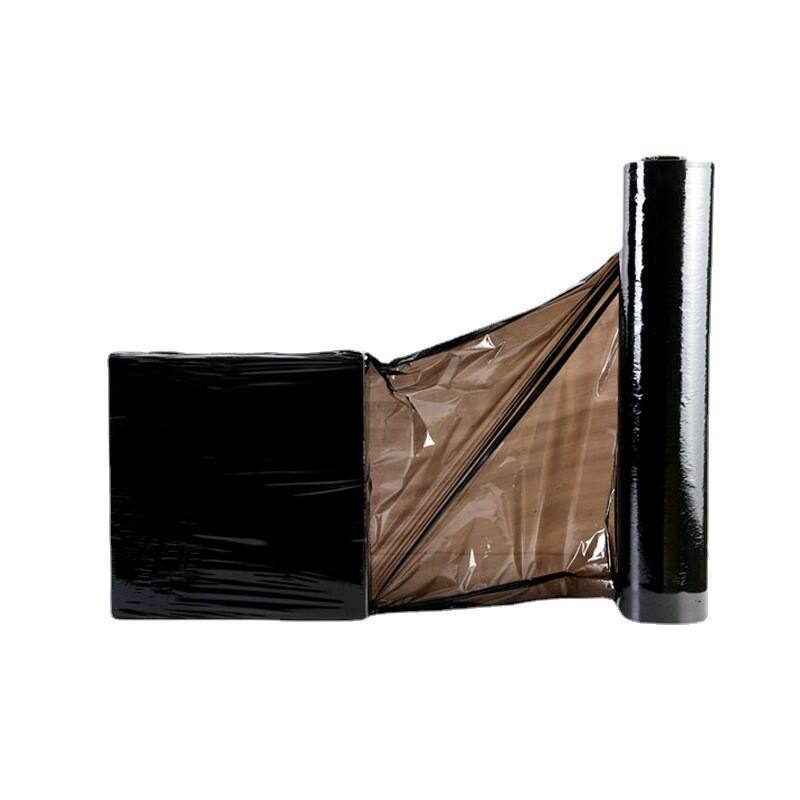Plastic films play a significant role in harming the environment. They contribute to pollution by littering landscapes and waterways. Their non-biodegradable nature means they persist for decades, creating long-term damage. These films also disrupt ecosystems, endangering wildlife and plants. You can see their impact everywhere, from urban areas to remote natural habitats. Understanding these environmental impacts is crucial. By addressing them, you help protect the planet and promote sustainability.
Environmental Impacts of Producing Plastic Films
Resource Extraction and Depletion
Producing plastic films begins with extracting raw materials like petroleum and natural gas. These resources are finite, and their extraction places immense pressure on the environment. You may not realize it, but drilling for oil and gas disrupts ecosystems and destroys habitats. It also consumes large amounts of energy, leaving behind a significant environmental footprint.
The depletion of these resources affects more than just the environment. It impacts future generations by reducing the availability of essential materials. When you consider the scale of plastic film production worldwide, the demand for these resources becomes staggering. This demand accelerates resource depletion, making it harder to achieve sustainability.
Greenhouse Gas Emissions
The production process for plastic films releases a considerable amount of greenhouse gases into the atmosphere. From extracting raw materials to manufacturing the final product, every step contributes to climate change. Factories that produce plastic films rely heavily on fossil fuels, which emit carbon dioxide and other harmful gases.
You might not see these emissions directly, but they play a major role in global warming. The environmental impacts of these emissions extend beyond rising temperatures. They lead to extreme weather events, melting ice caps, and disrupted ecosystems. By understanding this connection, you can see how plastic film production contributes to the broader climate crisis.
Environmental Impacts of Using Plastic Films
Contribution to Waste Generation
Plastic films contribute significantly to the growing problem of waste generation. Every time you use a plastic film, it adds to the massive amount of waste already overwhelming the planet. These films are often single-use, meaning you discard them after one use. This habit creates an enormous volume of waste that accumulates in landfills, streets, and natural environments.
Unlike organic materials, plastic films do not decompose naturally. They remain intact for decades, taking up space and creating long-term environmental challenges. The sheer volume of waste from plastic films makes it harder for waste management systems to keep up. When you consider how many people rely on plastic films daily, the scale of waste generation becomes staggering.
You can see the effects of this waste in your community. Overflowing trash bins, littered parks, and polluted waterways all point to the environmental impacts of plastic films. By reducing your reliance on these materials, you can help address this growing issue.
Pollution from Improper Disposal
Improper disposal of plastic films leads to widespread pollution. When you throw away plastic films carelessly, they often end up in places they do not belong. Wind and water carry them into rivers, oceans, and forests. This pollution harms the environment in ways you might not immediately notice.
Plastic films in waterways break down into tiny particles called microplastics. These particles contaminate water sources and enter the food chain. You might not realize it, but microplastics have been found in fish, drinking water, and even the air you breathe. This pollution affects not only wildlife but also human health.
Burning plastic films is another common disposal method that causes harm. When burned, they release toxic chemicals into the air. These chemicals contribute to air pollution and pose risks to your health and the environment. Proper disposal and recycling can reduce these harmful effects, but the best solution is to minimize the use of plastic films altogether.
Disposal Challenges of Plastic Films
Recycling Limitations
Recycling plastic films presents significant challenges. Unlike rigid plastics, plastic films are thin and flexible, which makes them difficult to process in standard recycling facilities. Many recycling centers lack the specialized equipment needed to handle these materials. When you place plastic films in regular recycling bins, they often clog machinery, causing delays and increasing operational costs.
Contamination further complicates recycling efforts. Plastic films frequently come into contact with food, oils, or other substances. These contaminants make it harder to recycle the material effectively. Even when facilities accept plastic films, the recycling process often results in lower-quality PRODUCTS. This "downcycling" limits the usefulness of recycled plastic films and reduces their overall value.
You might think recycling is the solution, but the reality is different. Only a small percentage of plastic films actually get recycled. Most end up in landfills or as litter in the environment. To address this issue, you can focus on reducing your use of plastic films and supporting initiatives that promote better recycling technologies.
Landfill Overflow and Microplastic Pollution
Plastic films contribute significantly to landfill overflow. Their lightweight and durable nature means they take up space without breaking down. When you throw away plastic films, they remain in landfills for decades, sometimes even centuries. This persistence creates long-term environmental problems and strains waste management systems.
Landfills filled with plastic films also pose risks to surrounding ecosystems. Wind can carry these films out of landfills, spreading pollution to nearby areas. Once in the environment, plastic films break down into microplastics. These tiny particles infiltrate soil, water, and air, creating widespread contamination.
Microplastic pollution affects more than just the environment. It enters the food chain, impacting wildlife and human health. Studies have found microplastics in seafood, drinking water, and even the air you breathe. By reducing your reliance on plastic films, you can help minimize this growing problem and protect both the planet and your well-being.
Effects of Plastic Films on Wildlife and Ecosystems
Harm to Animals
Plastic films pose serious threats to animals in various environments. Many animals mistake plastic films for food. When they consume these materials, it can block their digestive systems, leading to starvation or death. For example, marine animals like turtles often confuse plastic bags with jellyfish, a common food source. Once ingested, the plastic remains in their stomachs, causing severe health issues.
Entanglement is another major problem. Birds, fish, and other wildlife can get trapped in discarded plastic films. This restricts their movement, making it difficult for them to find food or escape predators. In some cases, entanglement leads to injuries or even suffocation. You might not see these effects directly, but they occur frequently in areas where plastic waste accumulates.
The harm extends beyond individual animals. When predators consume prey that has ingested plastic, the toxic effects move up the food chain. This process, known as bioaccumulation, impacts entire ecosystems. By reducing your use of plastic films, you can help protect animals from these dangers.
Disruption of Ecosystems
Plastic films disrupt ecosystems by altering natural processes. When these materials enter soil or water, they interfere with the balance of nutrients. For instance, plastic films in agricultural fields block sunlight and reduce soil aeration. This affects plant growth and harms organisms that live in the soil, such as earthworms.
In aquatic ecosystems, plastic films create physical barriers. They cover coral reefs, seagrass beds, and other habitats, preventing essential processes like photosynthesis. This disruption affects the survival of plants and animals that depend on these habitats. Over time, the loss of biodiversity weakens the entire ecosystem.
Microplastics, which form when plastic films break down, further exacerbate the problem. These tiny particles spread through water and soil, contaminating the environment. They are nearly impossible to remove and can persist for decades. You might not notice these changes immediately, but they have long-term consequences for ecosystems worldwide.
The environmental impacts of plastic films extend far beyond what you see on the surface. By understanding these effects, you can take steps to minimize your contribution to the problem. Choosing sustainable alternatives and disposing of waste responsibly can make a significant difference.
Sustainable Alternatives to Plastic Films
Biodegradable and Compostable Films
Biodegradable and compostable films offer an eco-friendly alternative to traditional plastic films. These materials break down naturally over time, reducing their environmental impact. Unlike conventional plastics, which persist for decades, biodegradable films decompose into organic matter under the right conditions.
You can find these films made from renewable resources like cornstarch, potato starch, or polylactic acid (PLA). These materials minimize reliance on fossil fuels and reduce greenhouse gas emissions during production. Compostable films go a step further by breaking down into nutrient-rich compost, which benefits soil health.
When choosing biodegradable or compostable films, look for certifications like ASTM D6400 or EN 13432. These labels ensure the product meets strict environmental standards. However, proper disposal is essential. Compostable films require industrial composting facilities to break down effectively. By using these alternatives, you can reduce your environmental footprint and support sustainable practices.
Reusable and Recyclable Packaging Solutions
Reusable and recyclable packaging solutions provide another effective way to reduce plastic film usage. Reusable options, such as silicone wraps or beeswax wraps, replace single-use plastic films in everyday tasks. These products last for months or even years, making them a cost-effective and environmentally friendly choice.
Recyclable packaging, like polyethylene (PE) or polypropylene (PP) films, offers a more sustainable option when disposal becomes necessary. These materials can be processed into new products, reducing waste and conserving resources. However, you must ensure proper recycling practices. Clean and sort recyclable films before placing them in designated bins to avoid contamination.
Some companies now offer take-back programs for plastic films. These initiatives collect used materials and recycle them into new products. By participating in these programs, you contribute to a circular economy that prioritizes resource conservation. Switching to reusable and recyclable solutions helps you reduce waste and protect the environment.
Reducing Plastic Film Usage
Reducing your reliance on plastic films is one of the most impactful steps you can take. Start by identifying areas where you use plastic films unnecessarily. For example, replace plastic wrap with reusable containers or cloth covers for food storage. Small changes in your daily habits can lead to significant environmental benefits.
When shopping, choose products with minimal or no plastic film packaging. Many brands now offer alternatives like paper, glass, or metal packaging. Supporting these options encourages companies to adopt more sustainable practices. You can also bring your own reusable bags and containers to reduce the need for plastic films.
Educating yourself and others about the environmental impacts of plastic films creates awareness and drives change. Share tips and resources with friends, family, and your community. By reducing plastic film usage, you take an active role in protecting the planet and promoting sustainability.
Plastic films create significant environmental impacts throughout their lifecycle. They pollute land and water, harm wildlife, and remain in ecosystems for years. These issues affect not only the planet but also your health and well-being. By choosing sustainable alternatives, you can reduce these harmful effects. Opt for biodegradable materials, reusable packaging, or recyclable options. Small changes in your habits make a big difference. Reducing your reliance on plastic films helps protect the environment and ensures a healthier future for everyone.


